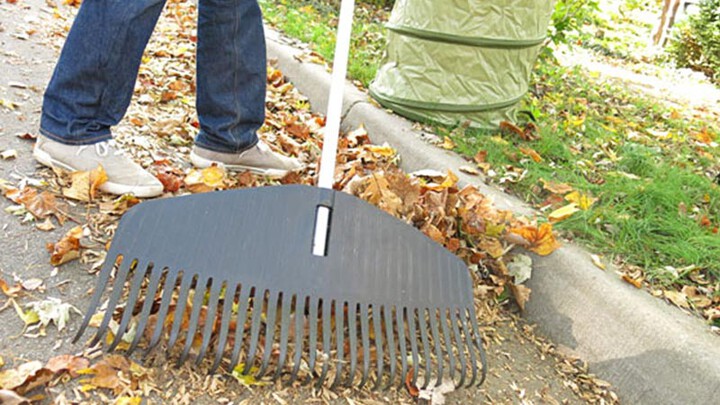Give your lawn a little extra care in fall to help it weather the winter and rebound the following spring. Fertilize as needed, cut for optimal growth, and water to maintain a healthy, lush lawn from one season to the next.
Fall Lawn Care Tips
Keep your lawn looking fresh this fall by following these tips.
1.Fertilize for Continued Growth
If you live in a northern climate and are working with a cool-season grass such as fescue, rye, or bluegrass, the best time to fertilize is in fall. Use a slow release organic fertilizer for optimal results. Slow release fertilizers are designed to provide grass the right amount of nutrients at the right time. They also have an odor that deters foraging animals like voles which can do damage in winter, especially under the cover of snow.
For southern climates and warm-season grasses such Bahia, Bermuda, or Zoysia, wait to fertilize until spring when they begin to grow. A rule of thumb is to fertilize after the first time you mow because with these grasses, fertilizing stimulates continued growth.
1.Keep Mowing
When mowing, cut the top third of both warm and cool-season grasses. The height depends on the type of grass you’re growing but the overall goals are the same. Cutting just the top third of the grass blades stimulates healthy growth while shading soil, helping retain moisture and encouraging the growth of a dense, lush lawn. This keeps grass fresh and durable for outdoor play and fall entertaining.
Keep your eye on the weather. If you live in a snowy, winter climate, plan to mow it slightly shorter than normal right before the first snowfall. This will make it easier to rake and tidy in the spring.
2.Continue to Water
It’s important to keep watering through fall as water warm and cool-season grasses continue to actively grow. The growth is taking place underground where grass plants form their foundation. This activity is important for the long-term health of your grass, repairing summertime damage and getting ready for the year ahead. Do not stop watering your lawn until the ground freezes.
Although watering is important in the fall, do not over-water your lawn. Too much water can saturate the lawn’s root system and damage the lawn. A typical lawn needs about one inch of water a week. To make sure you’re watering enough, measure the amount of time it takes a sprinkler to fill an inch of water in a straight-sided plastic container.

Fall Lawn Care FAQ’s
How short should I cut grass in fall?
Each grass type has an ideal mowing height depending on its growth pattern. It’s best to cut a typical cool-season lawn to about 2 to 2 1/2 inches. However, a warm-season grass like zoysia grows best at a height of about 1 1/2 inches. The general rule of thumb is to cut only the top 1/3 of the total grass height.
Can I seed my lawn in fall?
Re-seed cool-season grasses in fall and spring. However, wait to re-seed warm season grasses until late spring or early summer. That said, it’s possible to over-seed warm-season grasses in fall using a fescue to encourage a lush looking lawn into fall and winter.
Should leaves be raked or mulched with a mower?
There are pros and cons to both raking and mulching.
Raking is better if leaves fall too fast as a mower may not be able to keep up with mulching. You don’t want a thick layer of leaves on your lawn because they block out the sun and increase damage from fungal disease. However, raking is labor-intensive and time-consuming.
Mulching leaves into your lawn allows them to break down naturally boosting the soil quality. It’s also easier and less time-consuming. However, keeping up with mulching may become difficult if leaves fall too quickly. Leaves left on your lawn will cause damage to the grass. Mulching also doesn’t work well with everything that falls from trees, such as pine needles.